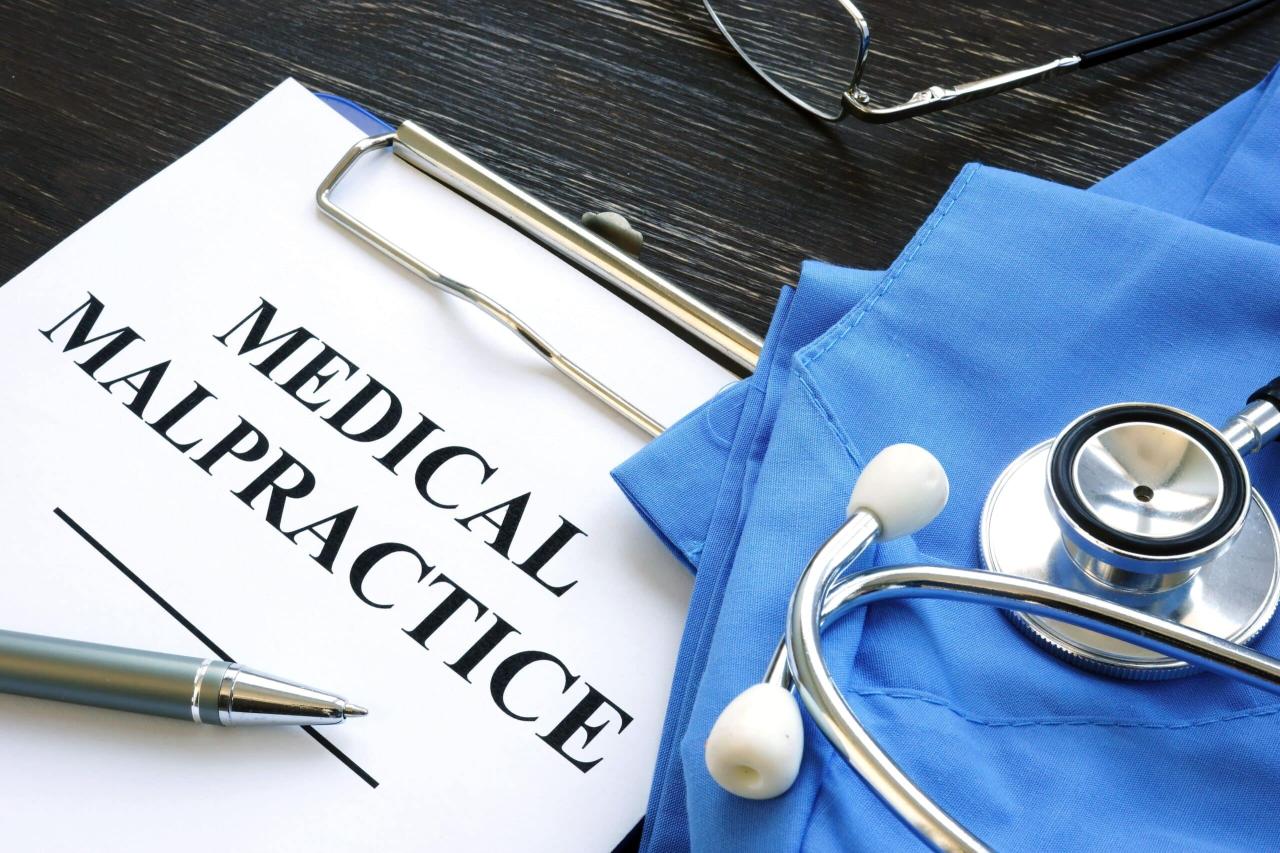
Legal Framework
In New York City, medical malpractice claims are governed by a comprehensive legal framework that establishes the grounds for liability, the elements required for a successful case, and the relevant legal deadlines.
The legal basis for medical malpractice in New York City is founded on the principle of negligence. Under this principle, a healthcare professional may be held liable for damages if they fail to provide the appropriate standard of care, resulting in harm to the patient.
Key Elements of a Successful Medical Malpractice Case
To establish a successful medical malpractice case, the plaintiff must prove the following elements:
- Duty of Care: The healthcare professional owed the patient a duty of care based on their professional training and experience.
- Breach of Duty: The healthcare professional breached their duty of care by failing to meet the appropriate standard of care.
- Causation: The breach of duty directly caused the patient’s injuries or damages.
- Damages: The patient suffered compensable damages as a result of the healthcare professional’s negligence.
Statutes of Limitations and Other Legal Deadlines
Medical malpractice claims in New York City are subject to specific statutes of limitations, which set forth the deadlines for filing a lawsuit.
- Two Years: Generally, medical malpractice claims must be filed within two years of the date the alleged malpractice occurred.
- Exceptions: There are certain exceptions to the two-year statute of limitations, such as cases involving minors or cases where the malpractice was not discovered within the two-year period.
- Notice of Claim: In addition to the statute of limitations, plaintiffs must also file a notice of claim with the relevant government agency within 90 days of the alleged malpractice.
Common Types of Medical Malpractice

Medical malpractice claims in New York City encompass a wide range of medical errors and omissions. The most prevalent types of claims involve misdiagnosis, surgical errors, and medication errors.
Misdiagnosis occurs when a healthcare professional fails to correctly identify a patient’s condition. This can lead to delayed or inappropriate treatment, resulting in harm to the patient. Surgical errors include mistakes made during surgery, such as operating on the wrong body part or leaving surgical instruments inside the patient.
Medication Errors
Medication errors are another common type of medical malpractice. These can occur when a doctor prescribes the wrong medication, administers the wrong dosage, or fails to monitor the patient’s response to medication. Medication errors can have serious consequences, including allergic reactions, organ damage, and even death.
Selecting a Medical Malpractice Lawyer
When seeking compensation for medical malpractice in New York City, choosing the right attorney is crucial. Several factors should be considered to ensure a successful outcome.
Experience and Reputation
An experienced medical malpractice lawyer has handled numerous cases and understands the legal complexities involved. Look for attorneys with a proven track record of success and positive client testimonials. Reputation matters, as it reflects the lawyer’s ability to navigate the legal system effectively and obtain favorable results.
Resources and Expertise
Medical malpractice cases often require extensive research, expert witnesses, and access to specialized resources. Choose a lawyer with a team of professionals and the necessary financial backing to support your case. Expertise in medical law is essential, as it allows the attorney to thoroughly understand the medical aspects of your case and present a strong argument in court.
Tips for Finding and Evaluating Potential Attorneys
* Referrals from trusted sources, such as previous clients or healthcare professionals
* Online research and review websites to gather information about lawyers’ experience and reputation
* Consultations with multiple attorneys to assess their communication skills, knowledge, and empathy
* Inquire about their fees and payment structure to ensure transparency and affordability
The Legal Process

Filing a medical malpractice lawsuit in New York City involves several key steps. The plaintiff, or the person who suffered harm, must first file a complaint with the court, outlining the allegations of negligence and the damages sought.
Once the complaint is filed, the discovery process begins. During discovery, both parties exchange information and documents related to the case. This includes medical records, witness statements, and expert reports. Discovery helps both sides prepare for trial by gathering evidence and identifying potential weaknesses in the other side’s case.
If the case cannot be resolved through settlement negotiations, it will proceed to trial. At trial, both sides present their evidence and arguments to a jury or judge. The plaintiff must prove, by a preponderance of the evidence, that the healthcare provider breached their duty of care and that this breach caused their injuries. Expert witnesses often play a crucial role in establishing the standard of care and proving causation.
The burden of proof in a medical malpractice case is on the plaintiff. This means that the plaintiff must present evidence that is more convincing than the evidence presented by the defendant. If the plaintiff is successful in proving their case, they may be awarded damages, which can include compensation for medical expenses, lost wages, pain and suffering, and other losses.
Damages and Compensation

In medical malpractice cases in New York City, victims may be awarded various types of damages to compensate for their losses. These damages fall into two main categories: compensatory and punitive.
Compensatory damages aim to reimburse victims for the harm they have suffered due to the negligence of a healthcare provider. They can include:
* Economic damages, which cover expenses such as medical bills, lost wages, and future medical expenses.
* Non-economic damages, which compensate for intangible losses such as pain and suffering, emotional distress, and loss of enjoyment of life.
Punitive damages, on the other hand, are awarded to punish the defendant and deter similar misconduct in the future. They are typically reserved for cases where the healthcare provider’s conduct was particularly egregious or reckless.
Examples of Successful Settlements and Verdicts
Some notable settlements and verdicts in medical malpractice cases in New York City include:
* In 2023, a jury awarded $10 million to a patient who suffered a permanent brain injury due to a surgical error.
* In 2022, a settlement of $7.5 million was reached in a case involving a misdiagnosis of cancer, leading to delayed treatment.
* In 2021, a medical center agreed to pay $5 million to a family after a patient died due to negligence during childbirth.
These examples demonstrate the significant compensation that can be awarded to victims of medical malpractice in New York City.





